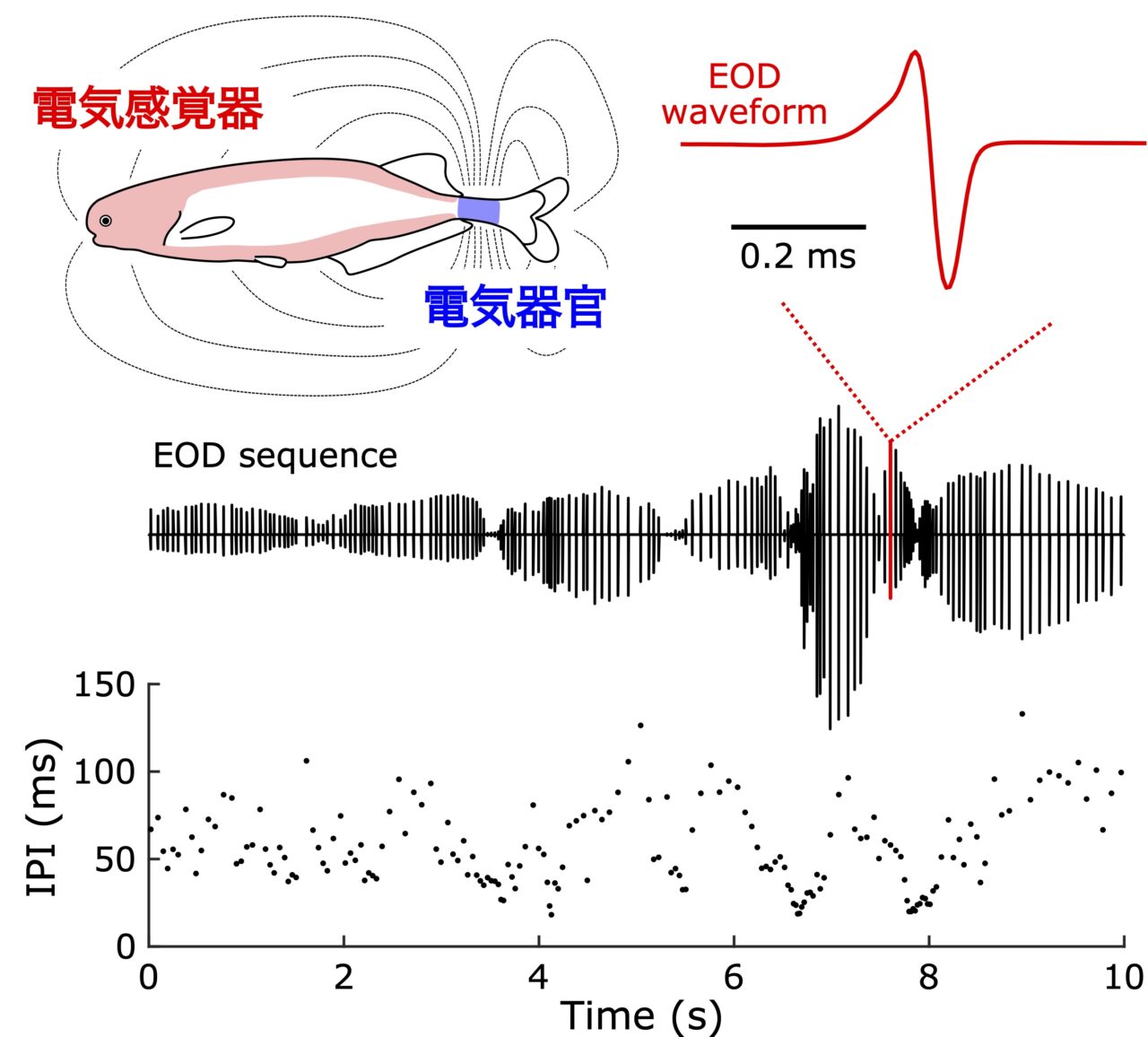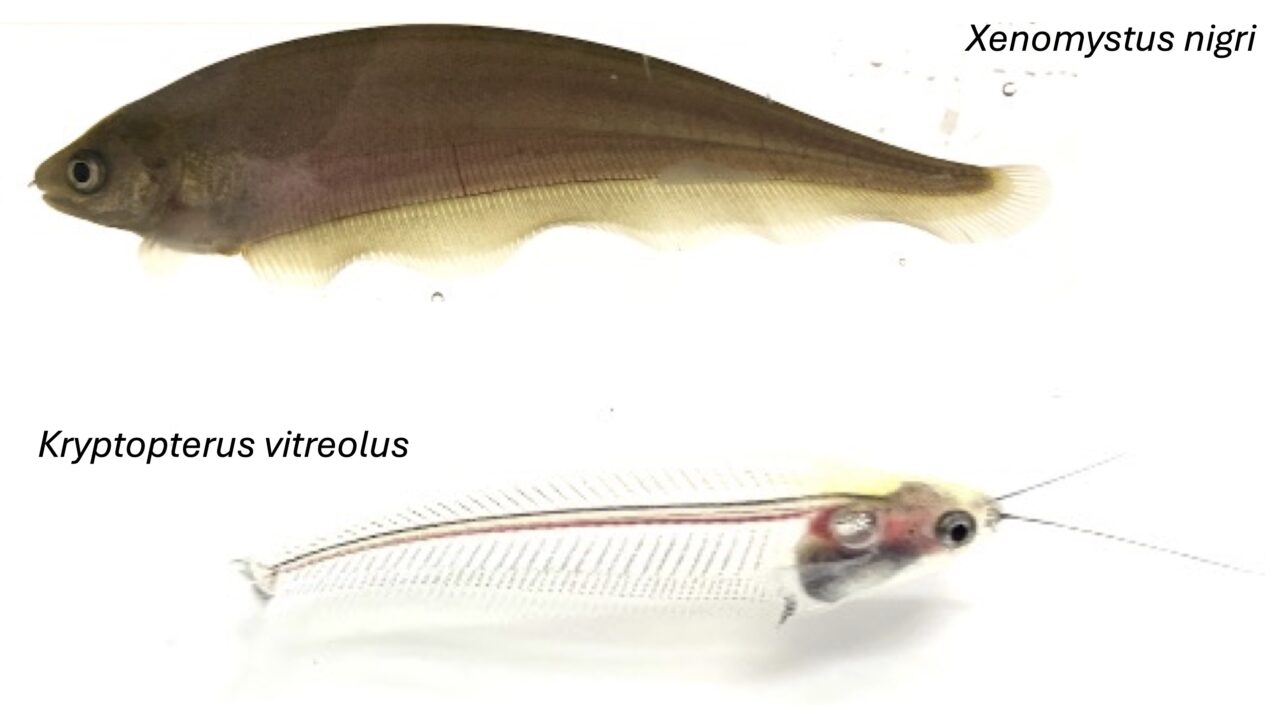FUKUTOMI, MatasaburoAssistant Professor
Organisms that live underwater are subject to a very different physical constraints than we are, and have a “sensory world” that we cannot imagine. My group focuses on mormyrid electric fishes, which generate electric pulses for communication and navigation, and aims to understand the “electrosensory world” of these fishes. Recently, we have started new projects on the closely related fishes that do not have the ability to generate electricity, but do have an electric sense, and are studying the evolution of the electric sense through a comparative approach.
 Mormyrid fish generate electric pulses by discharging an electric organ in their tail and sense them with electroreceptors distributed over the skin. The interval between pulses can be flexibly varied to communicate behavioral states in the moment.
Mormyrid fish generate electric pulses by discharging an electric organ in their tail and sense them with electroreceptors distributed over the skin. The interval between pulses can be flexibly varied to communicate behavioral states in the moment.
 African knifefish (top) & Translucent glass catfiish (bottom)
African knifefish (top) & Translucent glass catfiish (bottom)
Electrocommunication of freely swimming electric fish
Electric pulse signals are recorded with eight pairs of electrodes, and swimming behavior is recorded with the above video camera. We developed an algorithm to dissociate the electric pulse signals for each individual. We quantified the swimming behavior using DeepLabCut.
Each species of organism has its own mechanism for living, depending on environmental and phylogenetic constraints. When you think about it, there are so many interesting things that are yet to be discovered. What would you like to research?
References
Hormonal coordination of motor output and internal prediction of sensory consequences in an electric fish. Fukutomi M, Carlson BA. Current Biology 33:3350–3359. 2023 DOI:10.1016/j.cub.2023.06.069
Signal diversification is associated with corollary discharge evolution in weakly electric fish. Fukutomi M, Carlson BA. Journal of Neuroscience 40:6345–6356. 2020 DOI:10.1523/JNEUROSCI.0875-20.2020
A history of corollary discharge: Contributions of mormyrid weakly electric fish. Fukutomi M, Carlson BA. Frontiers in Integrative Neuroscience 14:42. 2020 DOI:10.3389/fnint.2020.00042
モルミルス科弱電気魚から探る随伴発射の神経メカニズム 福富 又三郎 比較生理生化学 40:97–104. 2023 10.3330/hikakuseiriseika.40.97
Faculty
Faculty of Science
Department of Biological Sciences
Behavioral Neurobiology
Grad School
Graduate School of Life Science
Division of Life Science
Biosystems Science Course
Contact Information
Science Building 5, 5-803
Email: mfukutomi ![[atmark]](https://www2.sci.hokudai.ac.jp/dept/bio/wp/wp-content/themes/sci-bio_2407/img/atmark.png) sci.hokudai.ac.jp
sci.hokudai.ac.jp
